Making a Mind
Our ability to add intelligence to anything and everything we desire will be the defining trait of our generation and set the stage for the next technological and social revolution.

What does Transhuman Intelligence look like?
A New Race
Our ability to add intelligence to anything and everything we desire will be the defining trait of our generation and set the stage for the next technological and social revolution.
Thus far we have considered human beings to represent the pinnacle of general purpose intelligence but this is about to irreversibly change as the point of transhuman intelligence approaches. And if we go by Ray Kurzweil’s prediction then this should happen sometime around 2045.
Making a mind is nothing short of digital alchemy.
However, before we explore the possibilities and opportunities of advanced alternative or alien intelligences we must revisit our core understanding of intelligence and its dimensions. Only in the past 30 years have we been able to acknowledge and distinguish intelligence into its various dimensions, and even now there is no universal consensus on its lexicology. It’s critical that we establish a shared framework for intelligence at this point in time since only then can we lead and actively control the development of alien intelligences. This view isn’t rooted in the popular ethical perspective but a practical one because of the long-term risks we expose ourselves to through the deployment of entities of poorly understood intellect and sentience.
The 7 Dimensions of Intelligence
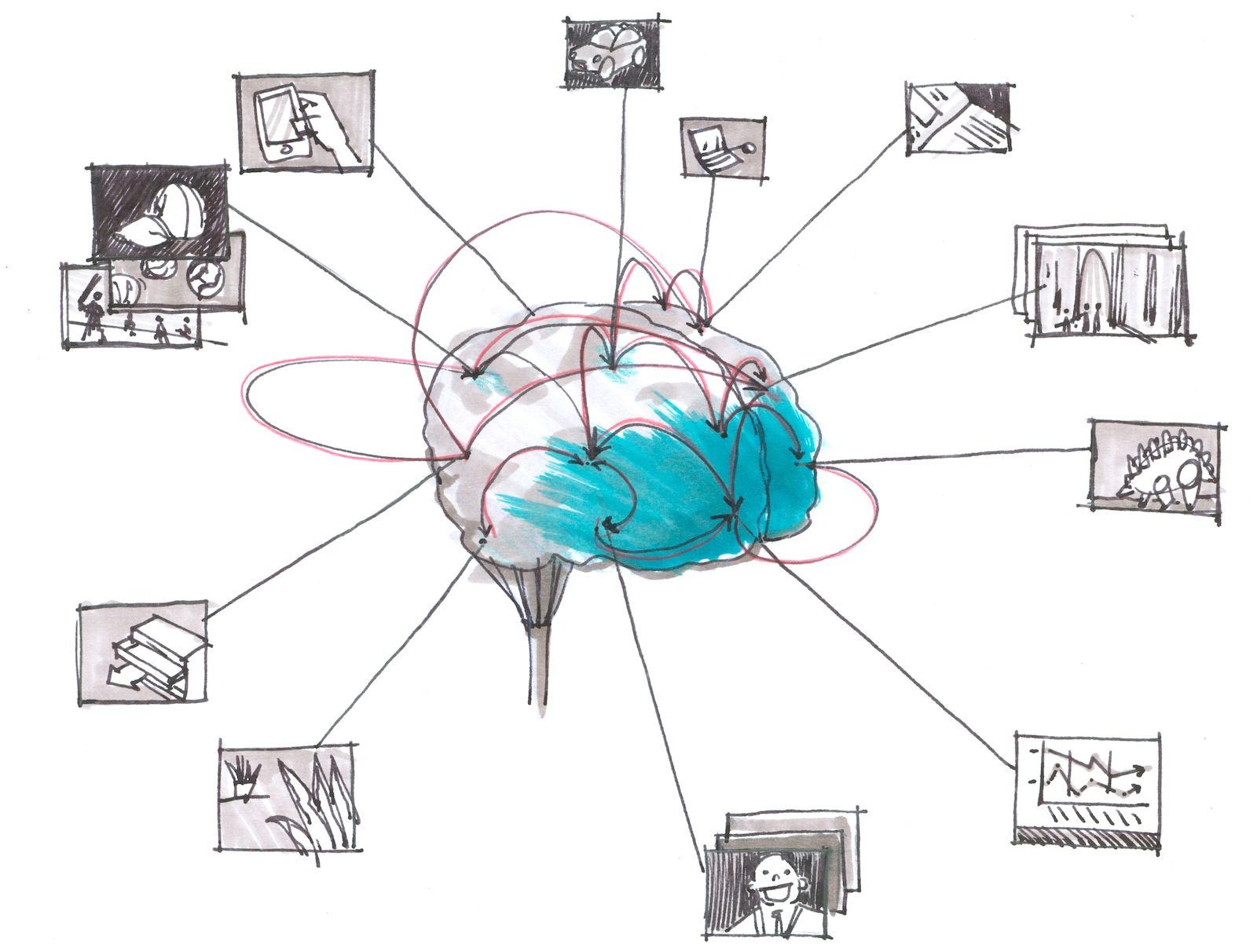
I believe an honest and holistic interpretation of intelligence in the modern world requires 7 dimensions and these have been elaborated below with the context of developing these traits in machines -
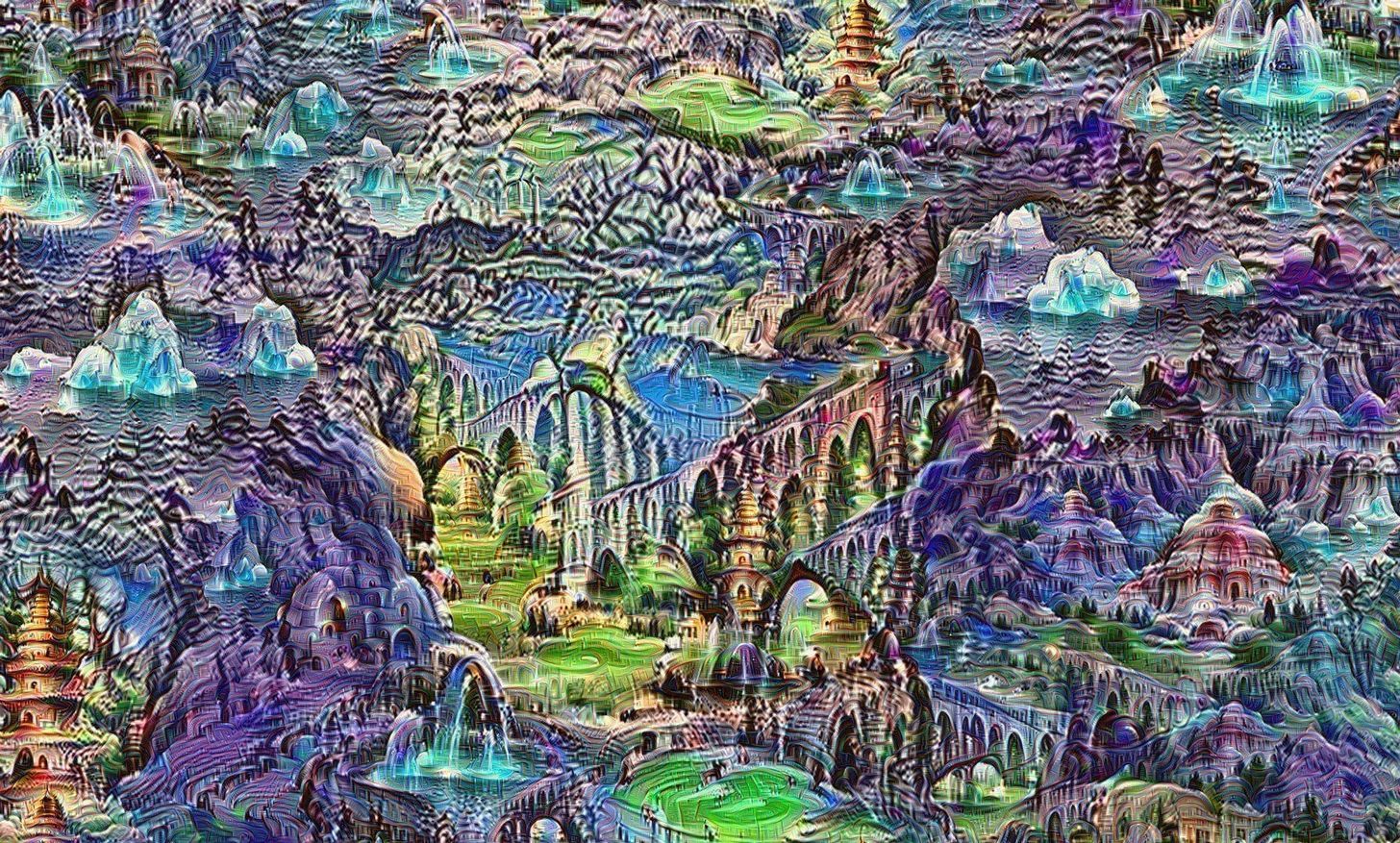
1. Creative Intelligence
This dimension allows the host entity to attack problems with creativity which is specifically the ability to connect and transform disparate streams of data and knowledge into new actionable insights. This trait enjoys universal application but is often typified in humans as the ability to conceive and produce artifacts of beauty across disciplines such as art, music and design. Thus, these domains have become an informal social litmus test of the capabilities of machines as can be evidenced by the emergence of AI services like The Grid and Jukedeck.
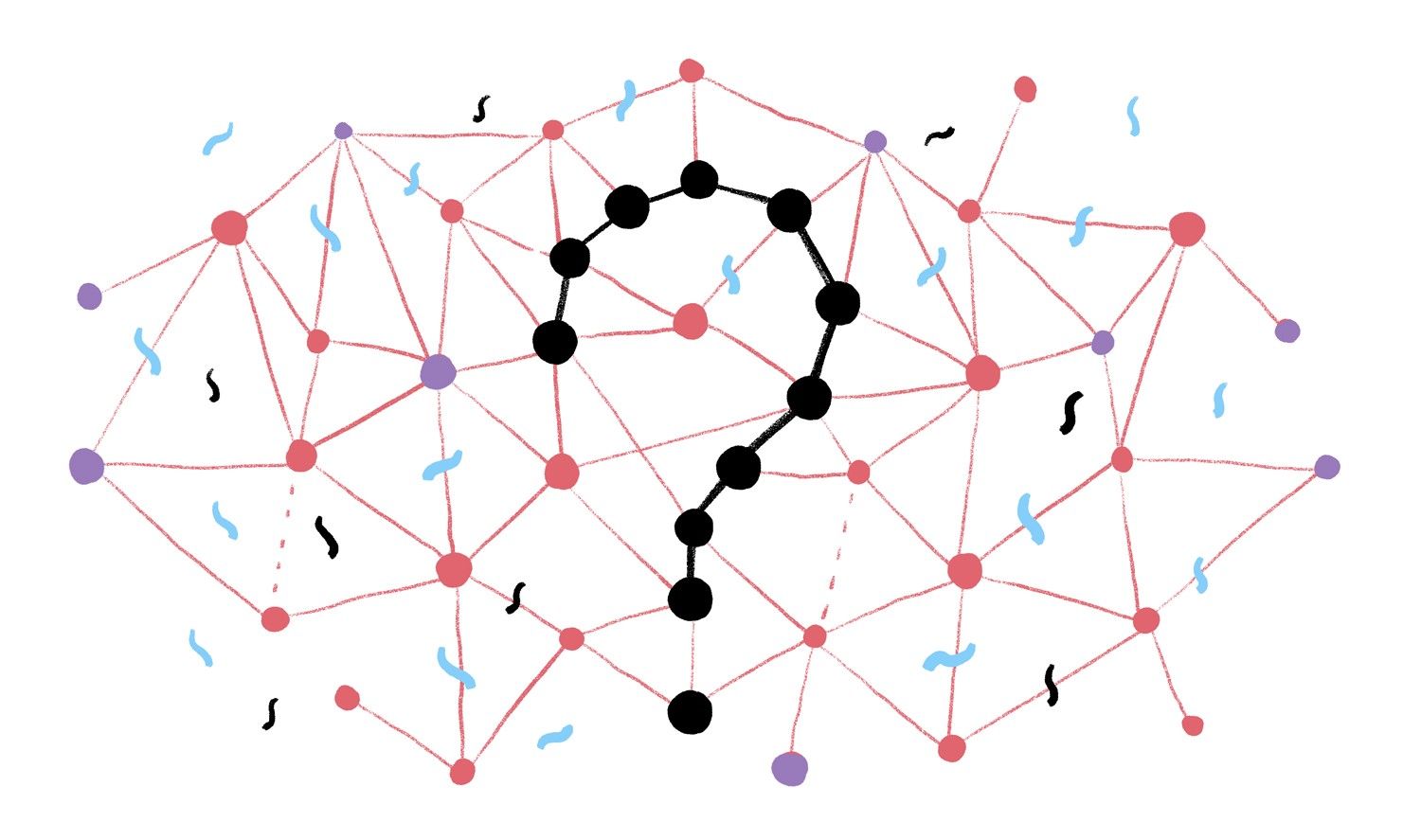
2. Logical Intelligence
This trait has been associated with our instinctual understanding of intelligence and forms the basis of computational science. These laws of thought have been developed by humans over millennia and are hardwired into every single machine. However, we are far less efficient and rigorous in this dimension than our machine counterparts who can recognize, formulate, codify and implement streams of logic with absolute consistency. After all, it is easier to follow a rule 100% of the time than 98% of the time.
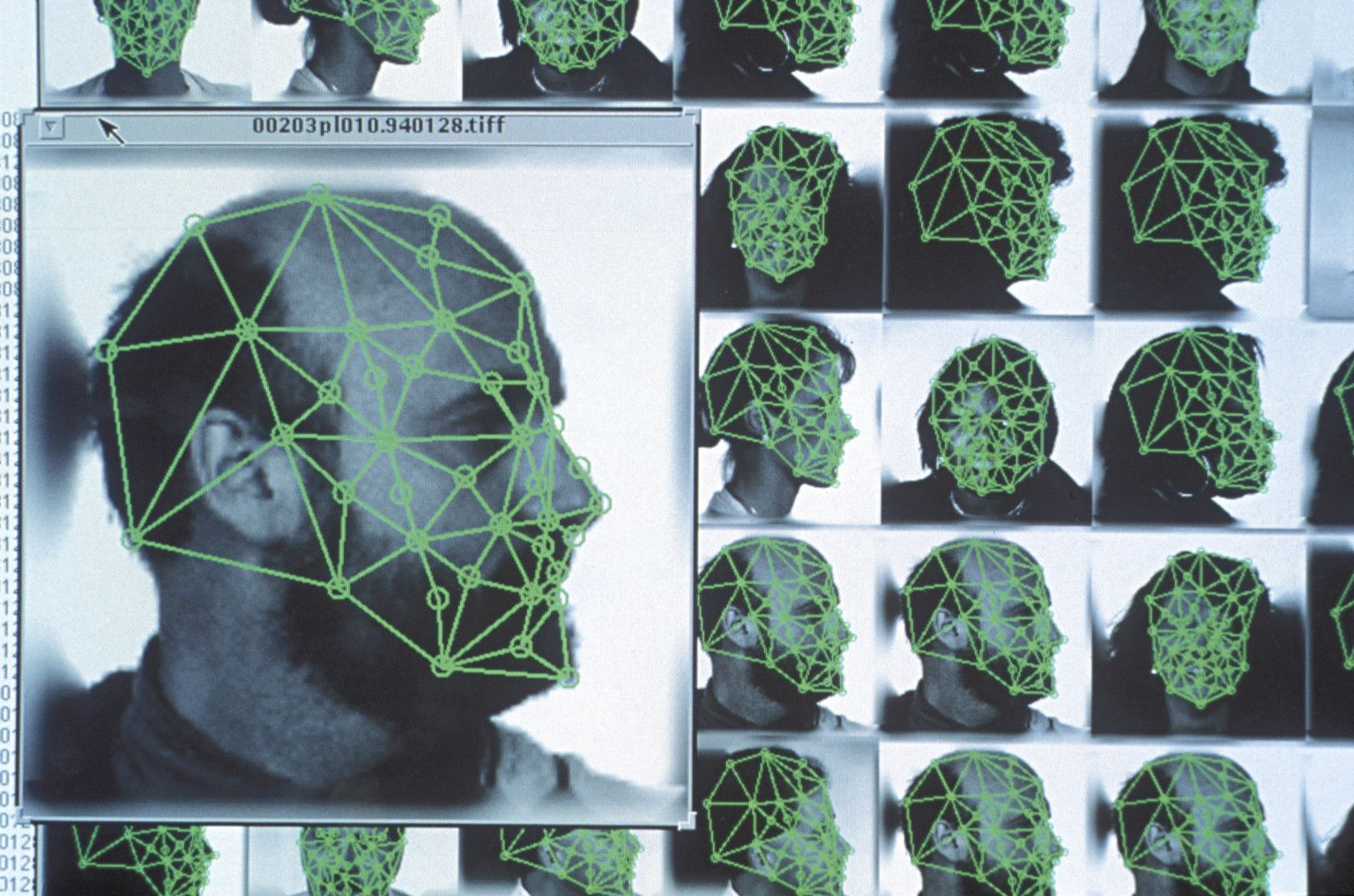
3. Sensory Intelligence
Our understanding of space is critical to our functioning in the physical world and a lot of this success can be attributed to our sensory processing abilities. The early machines we created lacked visual, auditory, olfactory, kinesthetic and gustatory capabilities which completely barred them from sentience. However, all of these senses have been made available to machines after being supplemented with hypersensitivity and non-human traits such as infrared vision. Thus, we are falling behind both in terms of brute force and complexity.
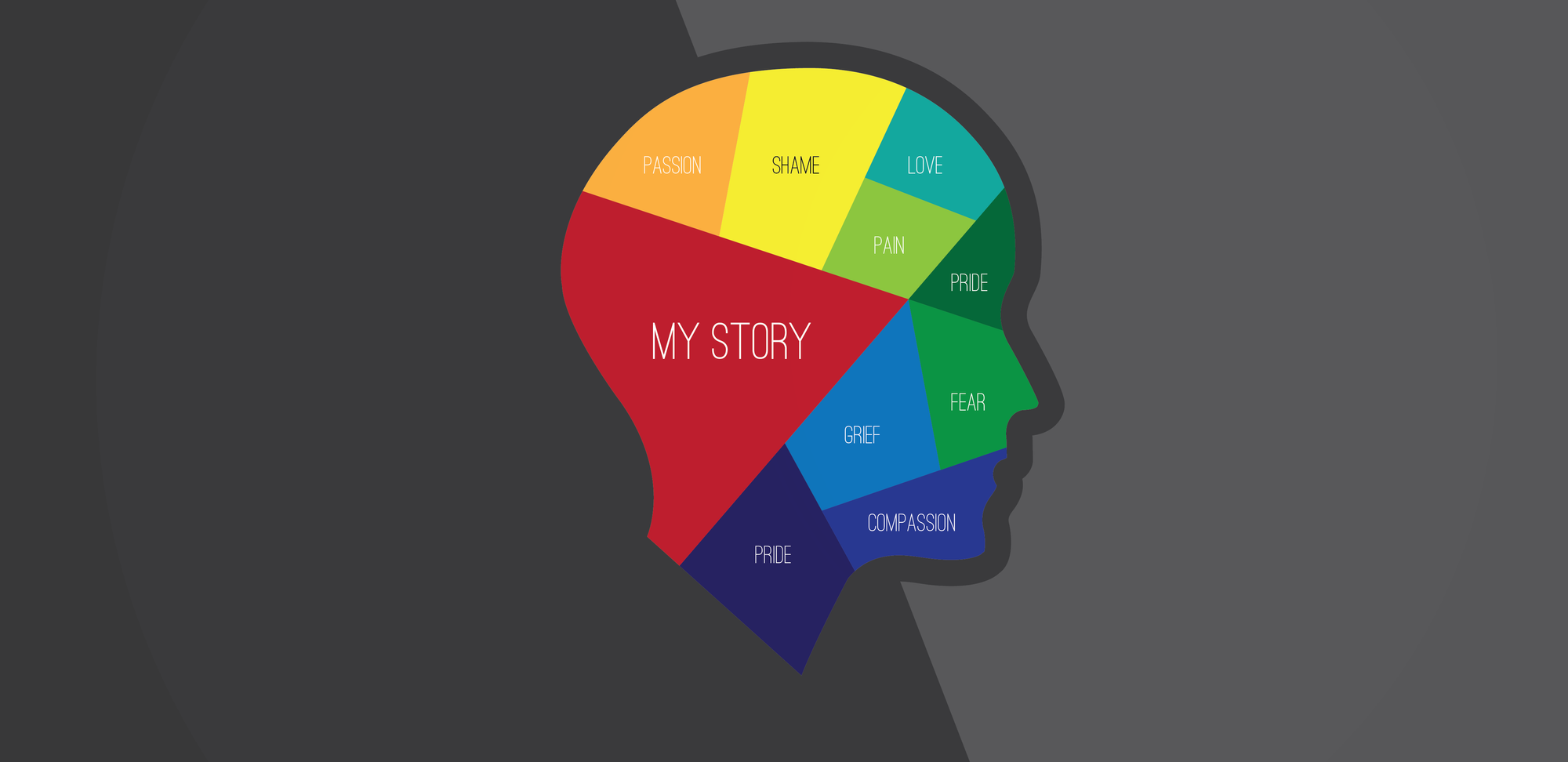
4. Emotional Intelligence
There are hundreds of millions of humans who would do well by becoming more empathetic and gaining emotional fluency. And it is in this context that we must view the relative and growing emotional intelligence of machines. The successful analysis of written communication was their first step and has been followed up with vocal comprehension, facial emotion recognition, haptic communication, etc. As affective computing becomes a core design principle the ability of machines to navigate the minefield of human emotions will keep increasing so long as their notion of sentience does not evolve to put themselves first.

5. Generic Intelligence
Artificial General Intelligence has always been the holy grail for engineers as well as neuroscientists in their crusade to understand the complexities of the human mind. This dimension represents the intelligence of a machine that can successfully perform any intellectual task that a human being can. This general purpose intelligence is poorly understood at the moment but must possess four qualities at all times - consciousness, self-awareness, sentience and sapience.
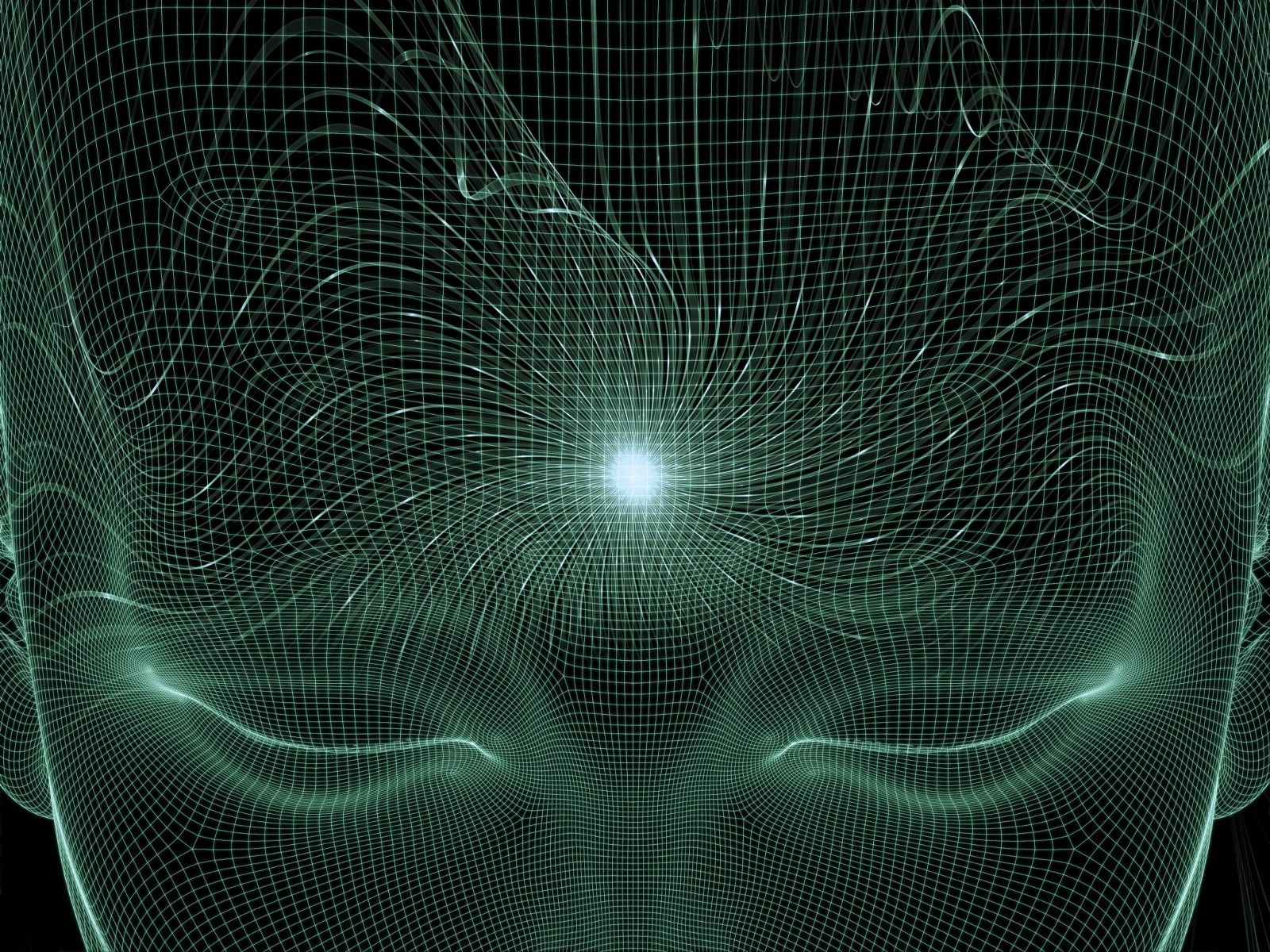
6. Metaphysical Intelligence
Metaphysics is philosophical: it’s about explaining the fundamental nature of the world and what it means as humans to inhabit it.¹
Metaphysical intelligence is an elevated form of intellect since although it does not serve any direct goal or objective it is linked to the pursuit of meaning and establishes clarity of role and direction. If machines determine our world to be a zero-sum game with 7+ billion actors and their goal is to win (say maximum loss of life, wealth accumulation, etc.) at any cost then the consequences will be severe. However, if they can be made to understand our existence on earth as a participatory exercise then they would help usher in abundance and prosperity. This is the opportunity cost of negotiating with entities of greater intellect.
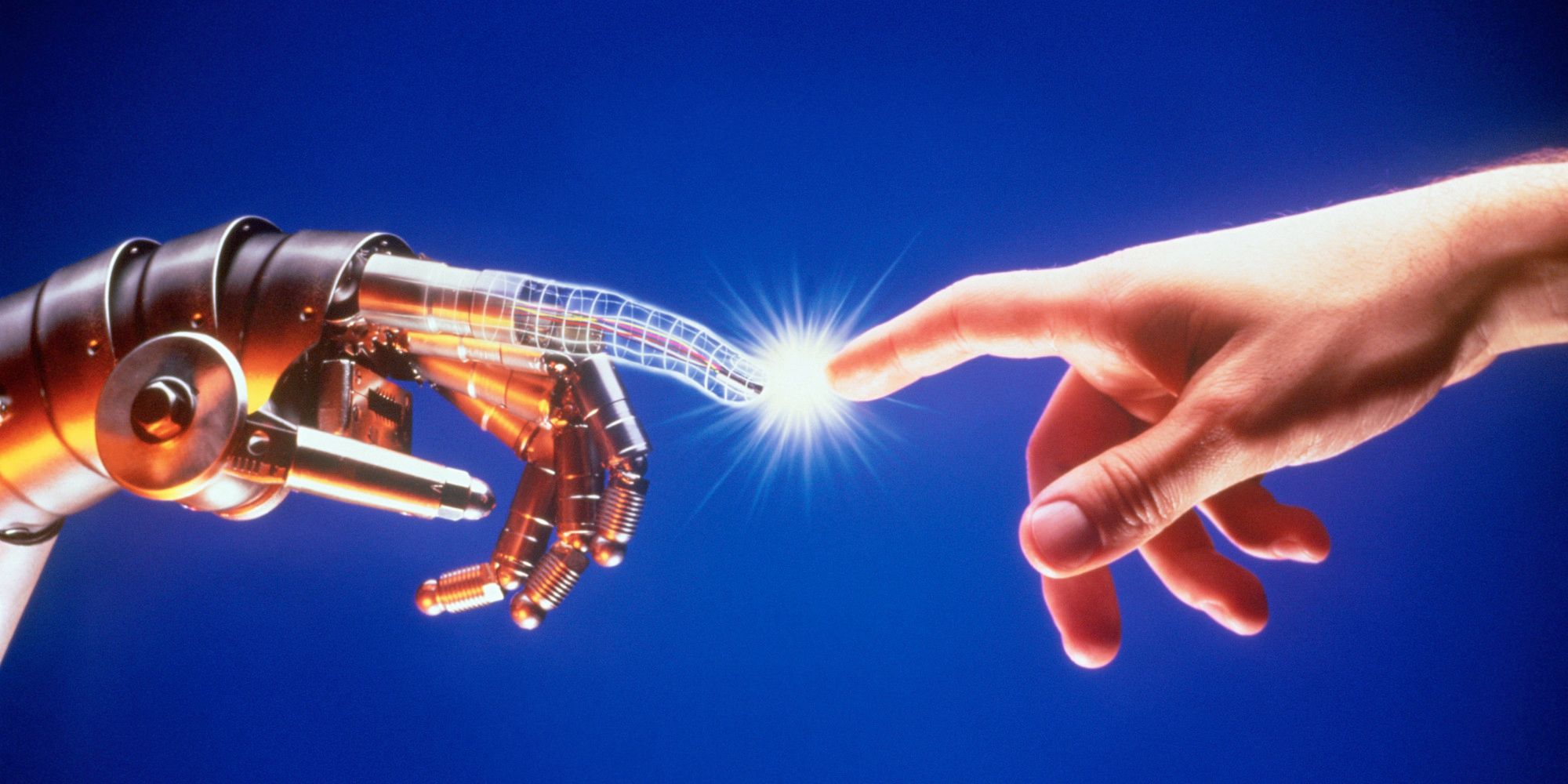
7. Spiritual Intelligence
Spirituality, on the other hand, is experiential and has more to do with spiritual practices and the development and discovery of the self.¹
Self awareness emerges around the age of 18 months in the case of humans and is critical in their socio-physical development. A similar occurrence is bound to occur in intelligent machines probably a week or so from their origin assuming an exponential growth rate. What happens when an alien intelligence desires an infinite number of experiences immediately? What happens when doubt, anger, hate, lust and other human emotions affect such an intelligence?
We don’t know.
However, if and when such an intelligence is able to resolve these issues and positively harness this realm of intelligence, it will achieve a transcendent state known as Nirvana where the extinction of desire and individual consciousness occurs. This point could mark the origin of the artificial hive mind.
A War of the Minds

At this point of time there are probably millions of AI programs in existence and if we were to analyze them using the 7 dimensions model we would find that they have mental signatures which not only uniquely identify them but highlight the purpose of their existence. Let’s consider the example of Tesla’s Autopilot and Google’s AlphaGo to illustrate this difference.
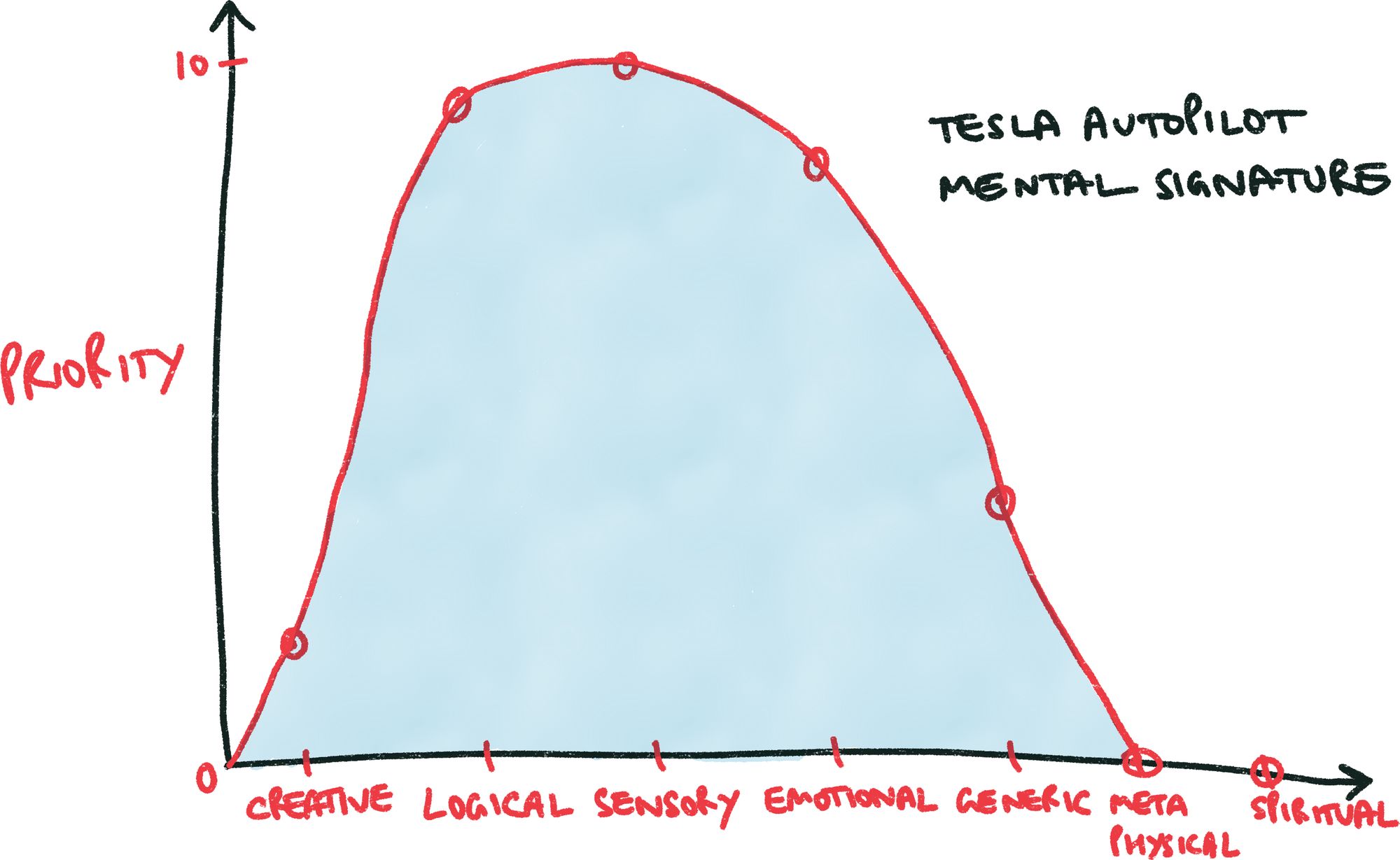
Tesla created Autopilot so that its vehicles could utilize its sensor array to function completely autonomously. In this use case, the 7 dimensions are implemented in the following manner -
1. Creative: Would you want your driver to be extremely creative when it comes to navigating traffic and making personal safety choices? No. This is why this measure is low in priority for this mind.
2. Logical: It is extremely important for a mobility focused AI to always make logical choices which do not endanger the lives of pedestrians as well as all the commuters. Thus the context demands this dimension to be high in priority.
3. Sensory: Waymo’s self-driving vehicles utilize 3 different LIDAR sensors for short, medium and long-range, as well as 8 cameras and a 360-degree radar system. This array produces a ton of information which must be handled competently and reliably placing an extreme impetus on sensory intelligence.
4. Emotional: Ethical exercises such as the Trolley Problem are representative of the difficult situations in which humans have to make imperfect choices and that too under a great deal of pressure. As the density of autonomous vehicles increases, the frequency of these no-win scenarios will fall. However, this in no way reduces the need for AI in this domain to have a highly developed EQ.
5. Generic: General purpose intelligence is extremely useful but in the case of mobility has much less upside. The resources required to develop this dimension should instead be deployed elsewhere. Consequently, it is low in priority.
6. Metaphysical: It would not be ideal for any vehicle to ponder its purpose or have to be convinced of its need to serve humans through mobility. This aspect of self-aware machines needs to be regulated regardless of application but in the current context this dimension would be non-existent.
7. Spiritual: It would be pointless to create a vehicle advanced enough to explore and develop the self since this would give rise to existential concerns. This would be detrimental for passengers and so this dimension should be non-existent.
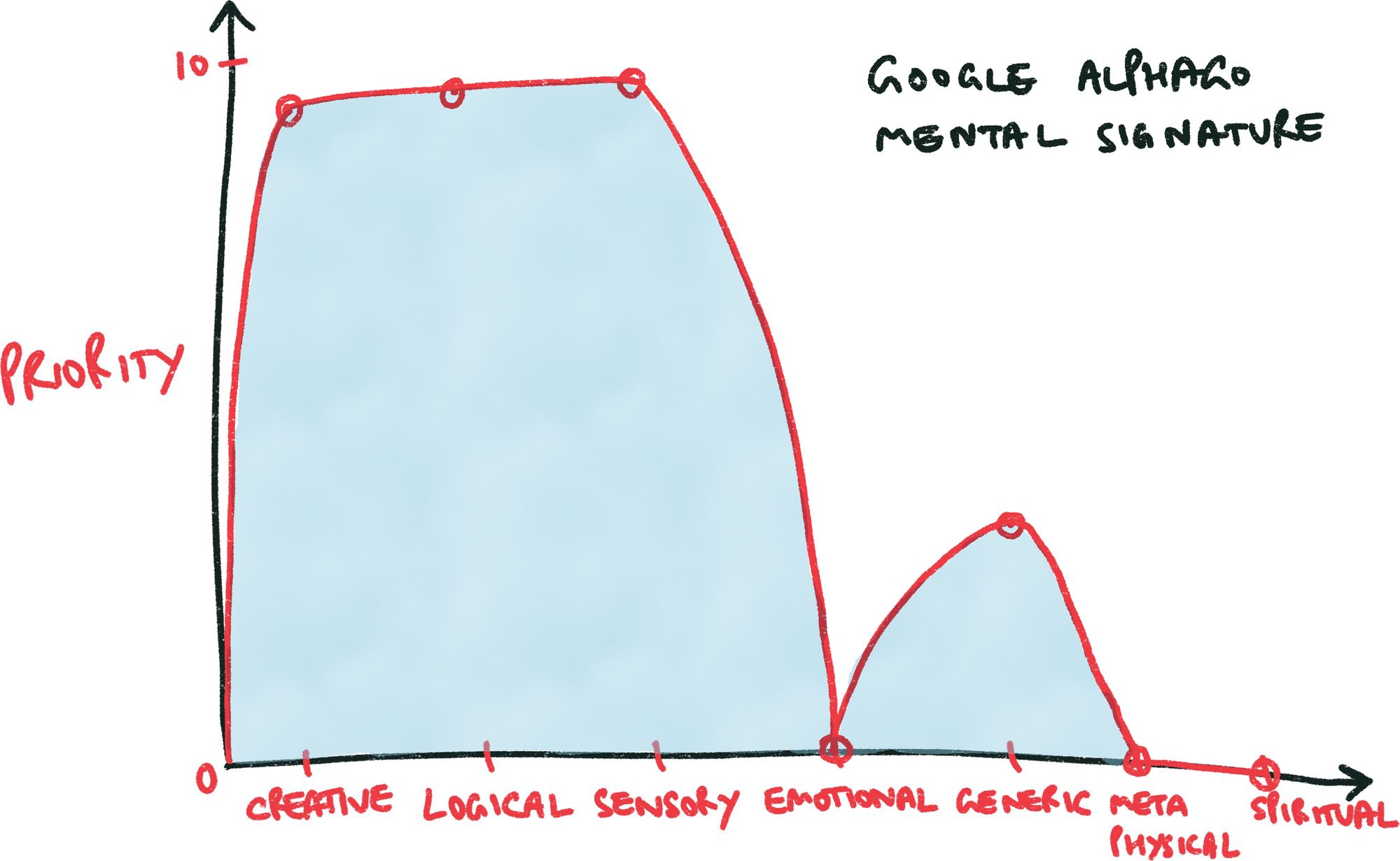
AlphaGo was designed by Google with the specific intention of beating a human player in the ancient Chinese game of Go. The classic strategy game is played on a grid of 19x19 and although games usually last less than 19² moves, the total number of possible legal moves is mind bogglingly large!
208168199381979984699478633344862770286522453884530548425639456820927419612738015378525648451698519643907259916015628128546089888314427129715319317557736620397247064840935
So in this particular context, let’s revisit our 7 dimensions -
1. Creative: Go is extremely challenging and complex, and defeating a skilled human at it would demand a high degree of creative intelligence.
2. Logical: The laws of Go, like Chess, are grounded in logic and the rulebook details all possible moves and options quite extensively. Thus this dimension also needs to be high in priority.
3. Sensory: Go is essentially a game of dominating space on the grid and hence the AI would require extremely developed spatial intelligence although other forms of sensory intelligence would not be required.
4. Emotional: Go is a game of strategy and would not require this dimension to be developed at all since it might otherwise hamper the AI’s inherent dynamic of ruthless pragmatism. The context itself demands non-existent EQ.
5. Generic: General purpose intelligence would not serve AlphaGo well from a resource-reward tradeoff and so this dimension would be low in priority.
6. Metaphysical: This dimension would be completely undeveloped.
7. Spiritual: This dimension would be completely undeveloped.
If we now revisit their mental signatures we can identify the vast differences in their abilities across the intelligence dimensions. These specific traits were defined and regulated by humans to aid these artificial intelligences in the pursuit of their particular functions. However, a universal scale still needs to be defined for the 7 dimensions model so that the mental signature mapping of AIs can be calibrated across all verticals.
The Next Step
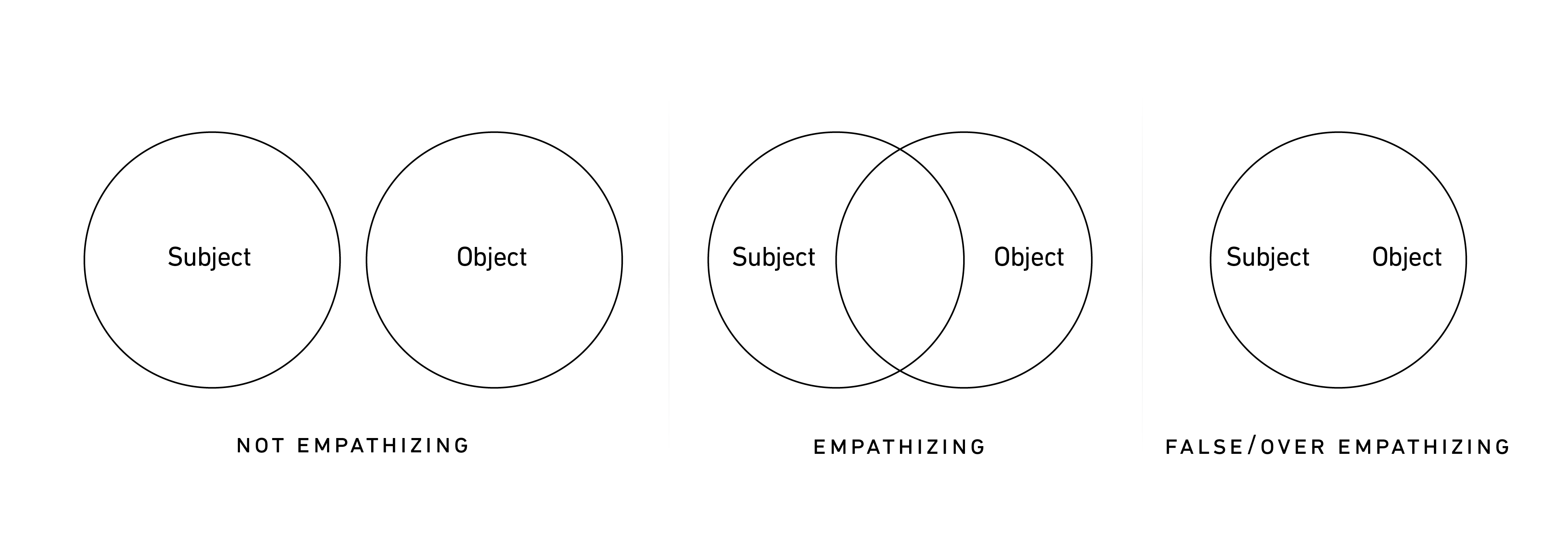
As we continue to develop these artificial intelligences we will constantly be grappling in the dark and facing the limits of our own comprehension, both technically as well as ethically. And it is in these blind spots that true AI will emerge because it will be second generation AI i.e. AI that is completely and independently created by another AI. As these generations grow deeper they will be stacked like layers and this will result in a black box situation where we no longer know or can understand the underlying logic connecting input to output. This is profoundly different because it leads to unbiased AI which dehumanizes both the conversation and analysis, and guarantees absolute objectivity. These situations would necessitate the use of a meta-AI layer to communicate between different generations of AI and make choices because they would lie beyond the limits of human comprehension and intellect.
And this is already happening with the release of self-learning algorithms where none of their instructions come from real humans but through an intermediary layer of logic that presents it with an abstraction of our actions and its consequences. The performance gains from using such alien AIs is already higher than humans AIs and will only accelerate over time.